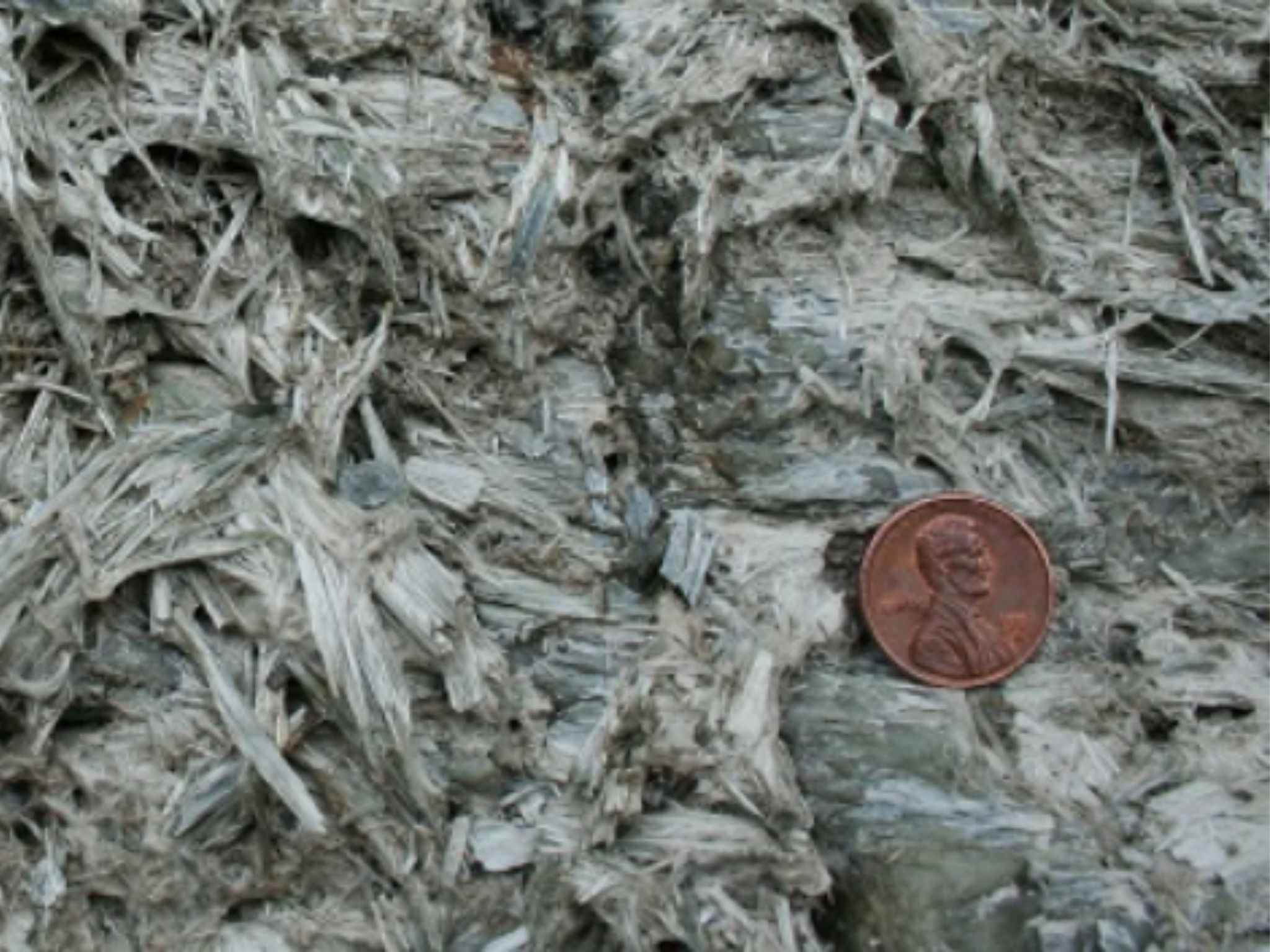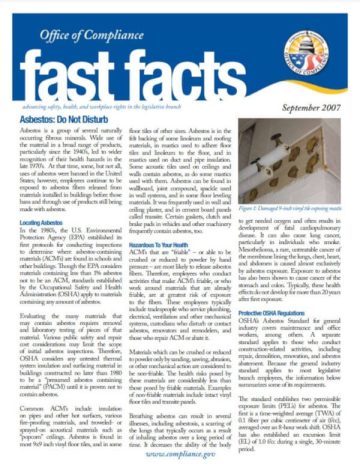Asbestos is a group of several naturally occurring fibrous minerals. Wide use of the material in a broad range of products, particularly since the 1940’s, led to wider recognition of their health hazards in the late 1970’s. At that time, some, but not all, uses of asbestos were banned in the United States; however, employees continue to be exposed to asbestos fibers released from materials installed in buildings before those bans and through use of products still being made with asbestos.
Locating Asbestos
In the 1980’s, the U.S. Environmental Protection Agency (EPA) established its first protocols for conducting inspections to determine where asbestos‑containing materials (ACM’s) are found in schools and other buildings. Though the EPA considers materials containing less than 1% asbestos not to be an ACM, standards established by the Occupational Safety and Health Administration (OSHA) apply to materials containing any amount of asbestos.
Evaluating the many materials that may contain asbestos requires removal and laboratory testing of pieces of that material. Various public safety and repair cost considerations may limit the scope of initial asbestos inspections. Therefore, OSHA considers any untested thermal system insulation and surfacing material in buildings constructed no later than 1980 to be a “presumed asbestos containing material” (PACM) until it is proven not to contain asbestos.
Common ACM’s include insulation on pipes and other hot surfaces, various fire‑proofing materials, and troweled‑ or sprayed‑on acoustical materials such as “popcorn” ceilings. Asbestos is found in most 9×9 inch vinyl floor tiles, and in some floor tiles of other sizes. Asbestos is in the felt backing of some linoleum and roofing materials, in mastics used to adhere floor tiles and linoleum to the floor, and in mastics used on duct and pipe insulation. Some acoustic tiles used on ceilings and walls contain asbestos, as do some mastics used with them. Asbestos can be found in wallboard, joint compound, spackle used in wall systems, and in some floor leveling materials. It was frequently used in wall and
ceiling plaster, and in cement board panels called transite. Certain gaskets, clutch and brake pads in vehicles and other machinery frequently contain asbestos, too.

